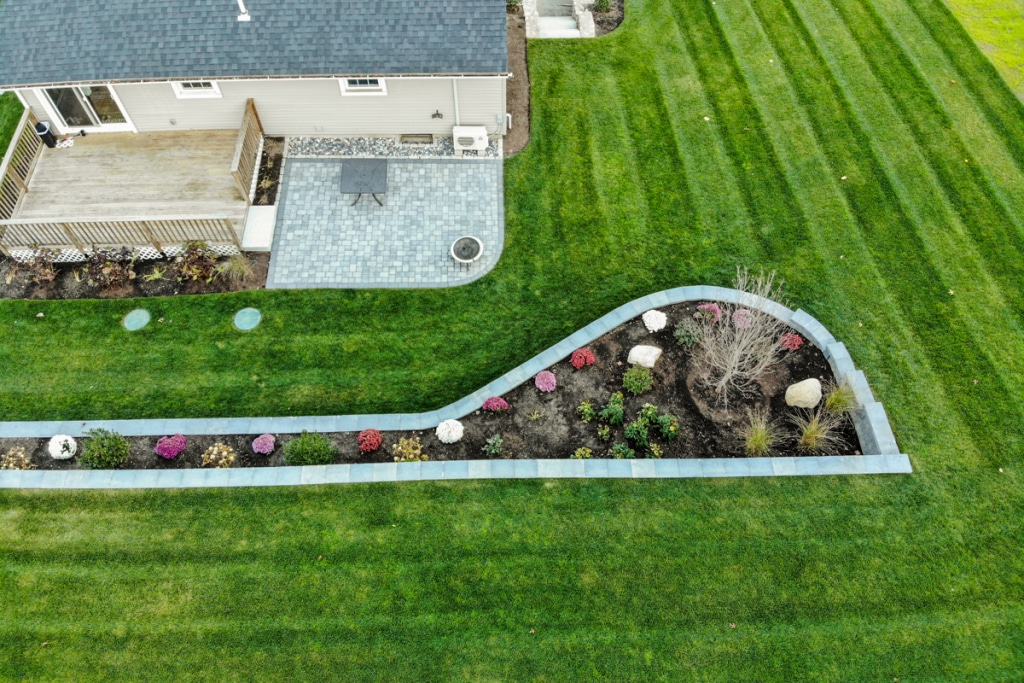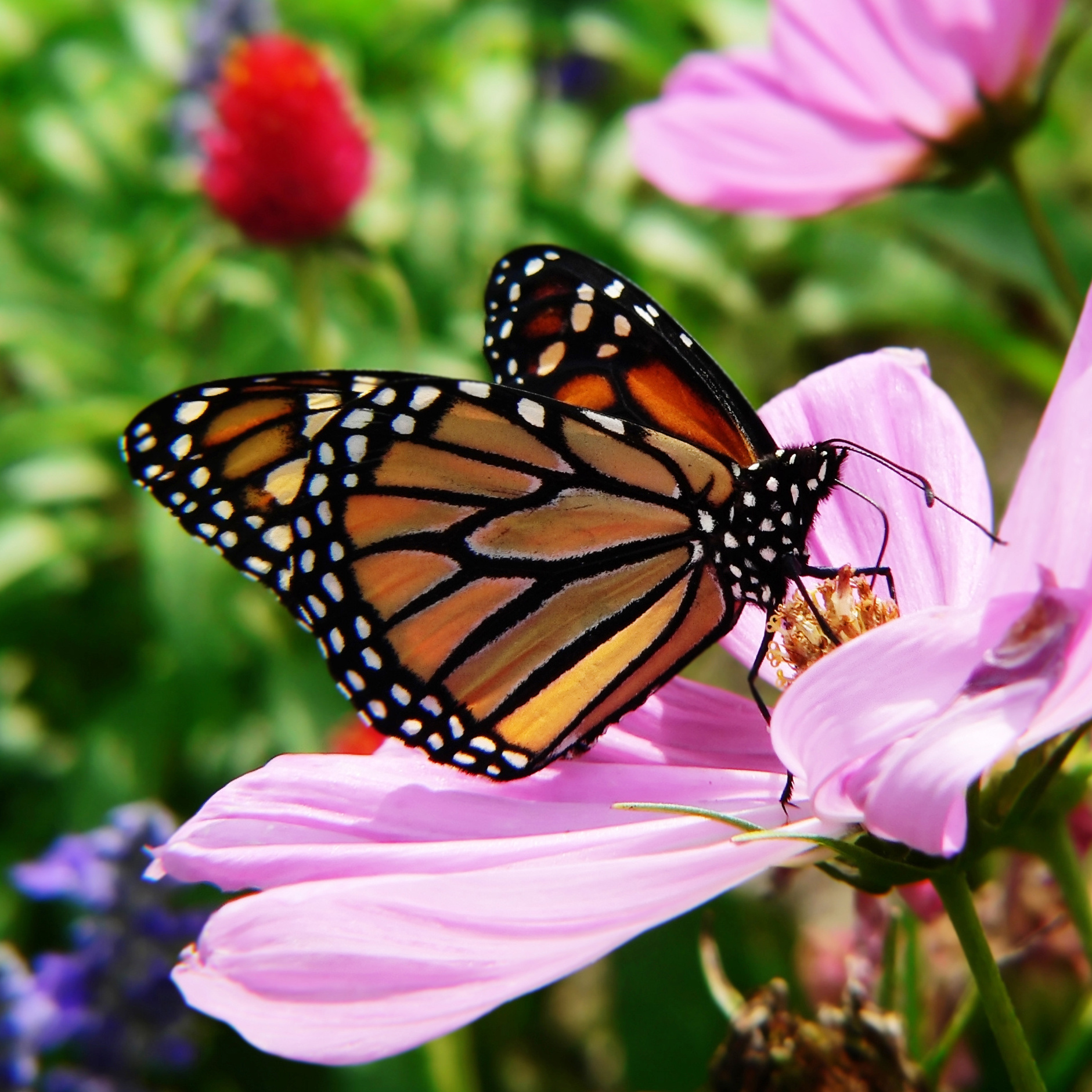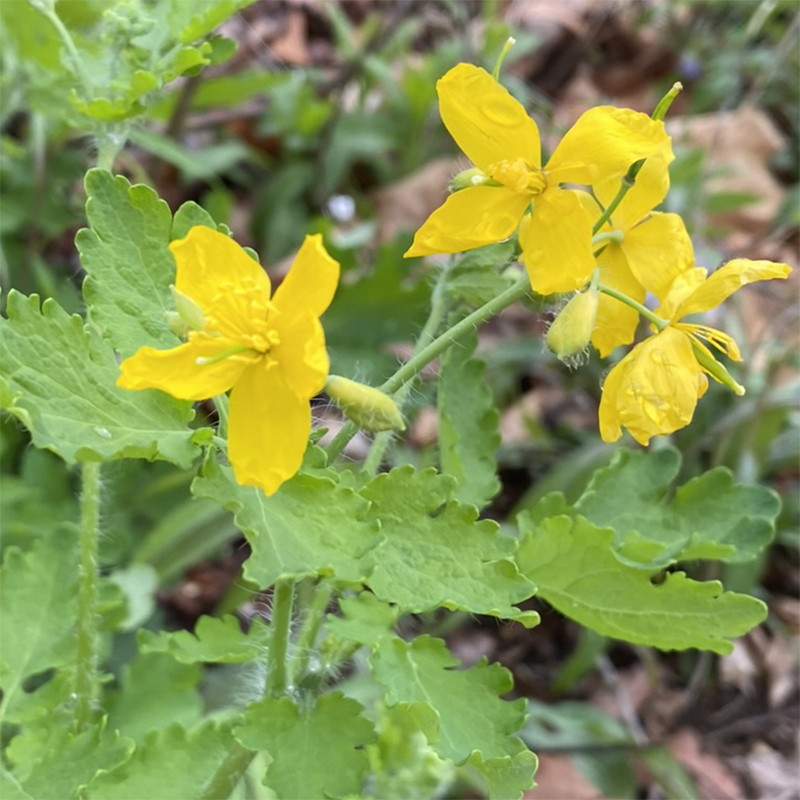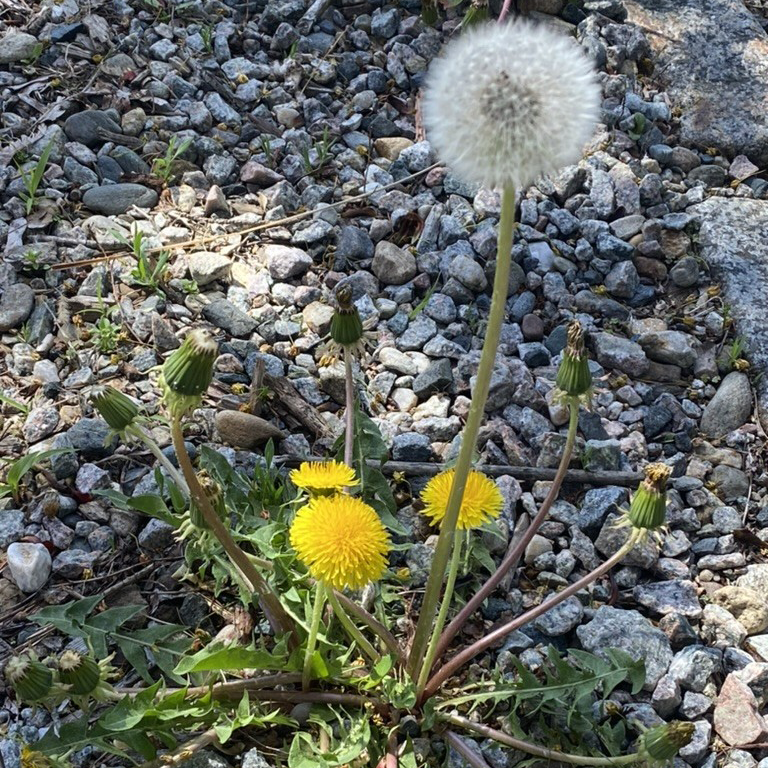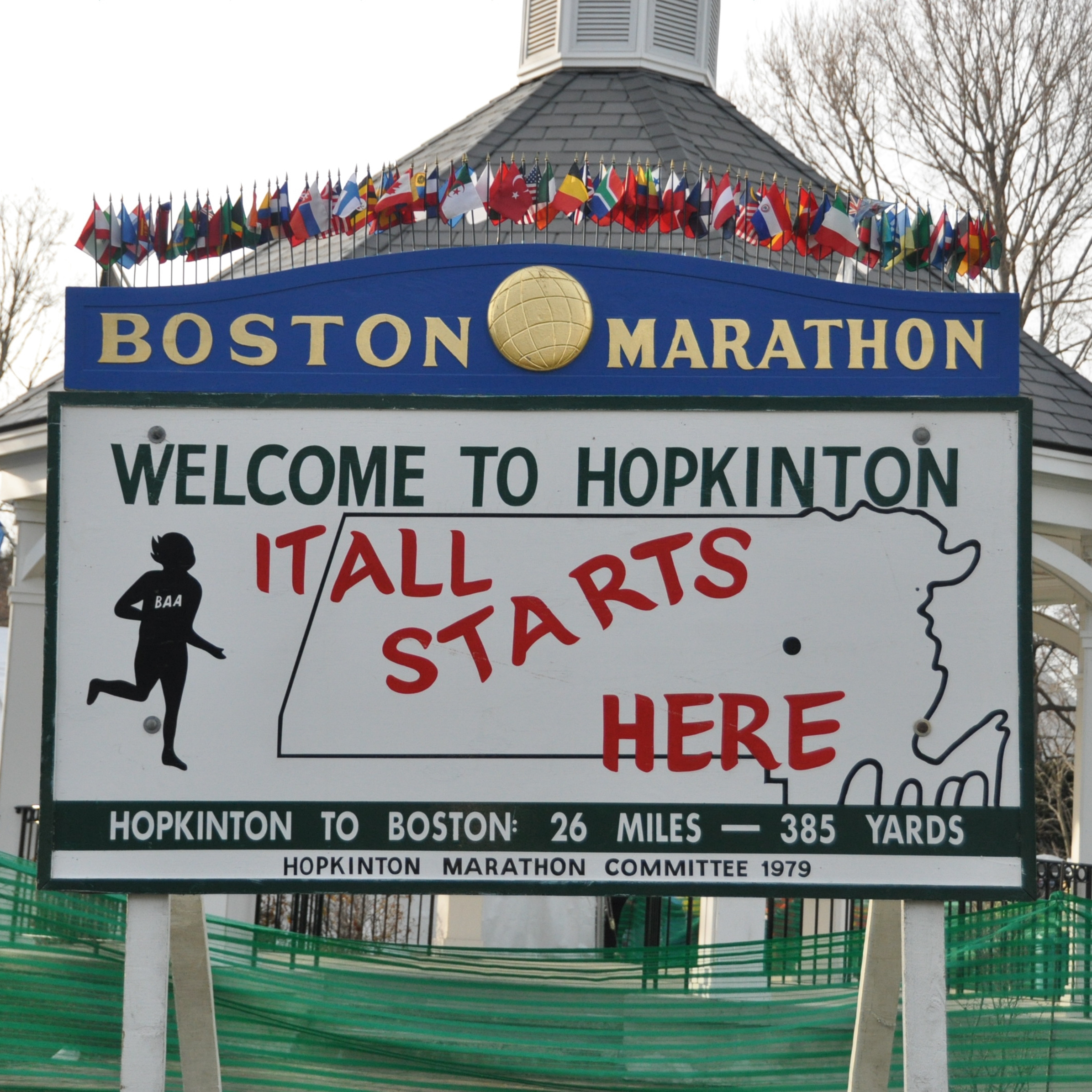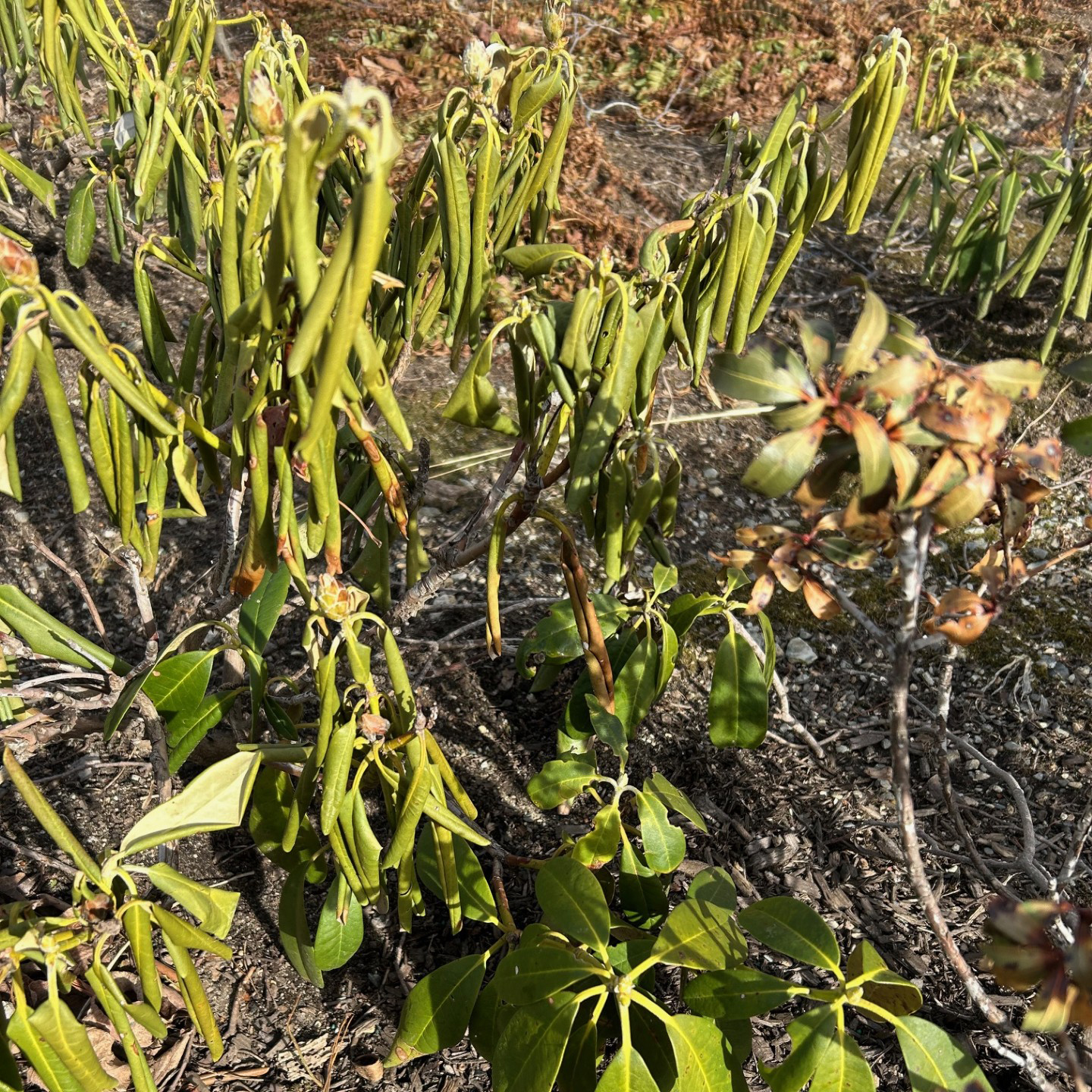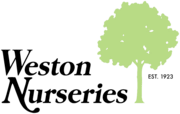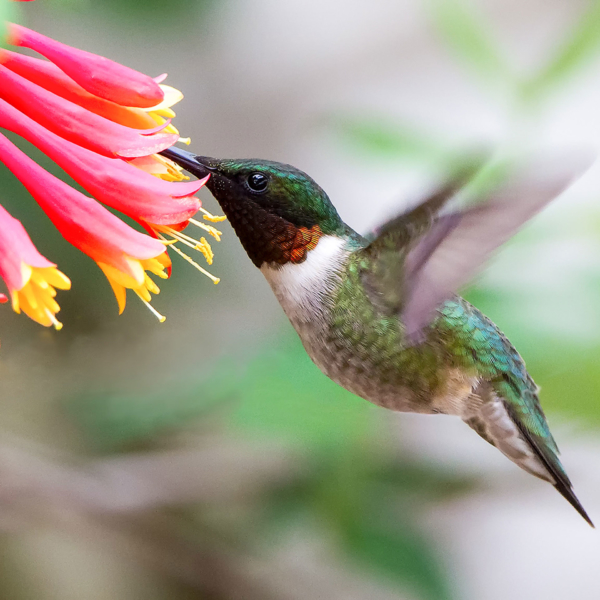
The arrival of June means it’s time for bright blooms, sunny days, and the return of the most diminutive of our feathered friends, the Hummingbird! Here’s some helpful tips to encourage these tiny visitors to your yard and garden.
Plant a bird-friendly habitat. Trees & shrubs provide places to shelter, nest, and perch. Blooming perennials and flowering annuals will provide food and attract your friends to your garden. They especially love red or purple flowers.
Some of our favorite plants for attracting hummingbirds are Aquilegia, Buddleia, Digitalis, Fuchsia, Hosta, Kniphofia, Lantana, Monarda, Penstemon, and Verbena. For the full list, look here.
Add a refreshing fountain or birdbath. It can be any style you like, from a classic pedestal to a clean bowl on a porch railing. Thirsty birds are especially drawn to water that splashes, ripples, or mists.
Place hummingbird feeders in shaded locations, within easy distance from a safe perch, protected from the open and potential predators. They like to sit in places where there’s a good vantage point to keep an eye on their food source.
Speaking of perches, have you ever seen a hummingbird swing? Make your feeders extra enticing by placing a swing perch nearby, like the ones made by Pop’s Hummingbird Swings. We carry them in our garden centers and folks rave about how much their hummingbirds enjoy them.
And remember: quality nectar is so important! Clear nectar made from a simple sugar solution is better than nectar that has been dyed red. You can buy some pre-made in a bottle to get started, or use this recipe to make your own.
Click here to read our Hummingbird Guidelines!

